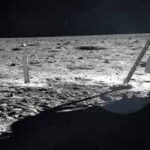Ten years from now, the final flight of the space shuttle Atlantis could very well have a footnote in the annals of bone density research.
The July 2011 trek, the last scheduled shuttle mission for financially hamstrung NASA, took 30 mice into space to give medical researchers a chance to study not only the effects of microgravity on bone density in astronauts, but to glean insights that could help rheumatologists and their patients deal with age-related bone loss in Earth-bound patients. Half of the mice were treated with a sclerostin antibody that pharmaceutical firms Amgen and UBC are co-developing with the intent to help treat osteoporosis in the future. The other half of the rodents was given a placebo.
Why Space?
Ted Bateman, PhD, associate professor in the department of biomedical engineering and department of radiation oncology at the University North Carolina, Chapel Hill, says space flight gives scientists insights they otherwise could not attain. The work done aboard Atlantis was led by seven principal investigators, including Dr. Bateman, Amgen, and researchers at the University of Colorado and Harvard University.
“The benefits of space flight are that it’s an extreme model for causing osteoporosis,” he says. “It’s really not possible to mimic it in any way here on Earth. We have models … but there’s really no way to fully unload the skeletal system on Earth. Even in bed, gravity is affecting the person.”
But not in space, where microgravity and its effects on bone density have been part of NASA space flights for at least a decade. By some estimates, astronauts lose up to 2% of bone density per month in space, giving a sense of urgency to medical experiments on space flights. The research, largely unknown and unheralded outside medical circles, has long been an ancillary benefit of space travel. And so it was after Atlantis’ final flight that researchers were able to dissect the subject mice and study how microgravity affected various bone growth processes. The mice were studied for a variety of other space effects as well, as scientists from a variety of medical specialties arranged to dissect the mice for tissue and other biological material that could be used to forward research.
You always want to move forward in science…and this would be a pretty big step backwards if we can’t fly animals to space again.
Henry Donahue, PhD, vice chair for research in the department of orthopedics and rehabilitation and director of the division of musculoskeletal sciences at Penn State Hershey College of Medicine, Hershey, Pa., led a team that removed marrow from mice bones in an attempt to isolate mesenchymal stem cells that might turn into osteoblasts.

